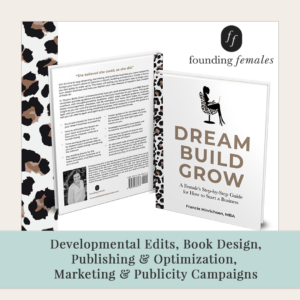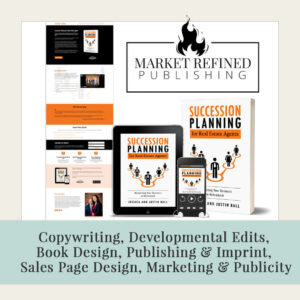
Whether you have just polished a new blog post series, your quarterly newsletter, a book proposal, or the work of heart that is your manuscript, chances are that you are in need of a second (or third) look at the content. As the author, it’s so easy to read what should be there rather than what is, or to read a point with your intended conclusion rather than how someone new to your voice or passion might perceive it. For these reasons, you will hear us quite often advocate for hiring an editor. That second set of eyes on your content can be the difference between a best seller and a series of bad reviews.
Did you know there are several different types of editing services available? We receive frequent requests for “proofing” copy, whether for a book, lead magnet, or website. More times than not, clients assume that proofing and editing are the same and don’t realize the differences in the types of services they are requesting. We’ll explain the three main types of editing services and the most common scenarios for each one.
Three Main Types of Edits
Developmental Editing
A developmental edit is an in-depth analysis of all of the major components of your manuscript ensuring that they flow seamlessly and leave no gaps. Simply put, the job of the developmental editor is to be a focused, objective reader who offers feedback to improve the structure, content, and organization of your manuscript. The purpose of a developmental edit is not to correct typos or simple grammatical errors, but instead this editing process will help you with your organization, presentation, clarity, flow, and tone – a big picture view of what you have to say and how you should say it.
A developmental edit is rarely a quick process and, much like the demo necessary to renovate a house, usually requires some de-construction and reassembly of the written work. Editors will provide a summary or evaluation of the manuscript as a whole, after their initial read-through, and highlight weaknesses, holes in character development (fiction), or areas of potential confusion for the reader. Typically a developmental editor does not perform any rewrites or copywriting during this phase of edits – an editor is not a co-author – but sometimes copywriting is available as an upgrade or add-on package.
We recommend a full developmental edit for most manuscripts we help publish. Although this is the least requested editing service, we find it to be the most needed for anyone publishing a book, study, or curriculum. A professional developmental editor is an invaluable investment for your overall success.
Line or Copy Edits
Line or copy editors cover a broad range of corrections and suggestions. The terms “line” and “copy” edits are often used interchangeably although there are some differences between the two. While a basic copy edit primarily focuses on grammatical errors, sentence structure, and consistency, a line edit generally also includes ensuring material is logical and understandable, sources are properly cited, inaccuracies and inconsistencies are addressed, sentences are clear and concise, and word choice is optimal. A line editor will typically make suggestions for minor rewrites while still focusing primarily on the technical aspects of the work, rather than the content itself.
For our purposes and services, we combine line and copy edits in one phase of editing as we have found this to be the most efficient for our clients and it helps guarantee a high quality return on their investment. We believe this combination of services is essential to the success of any book and is also beneficial to content for an online course, digital and/or downloadable resources, or anything that might offer a larger volume of content to readers, subscribers, or customers.
Proofreading
Proofreading is the final step in the editing process. Not to be confused with the more intensive types of edits above, a proofread is that last look to be sure your content is polished and ready for its debut into the world. Copy will be thoroughly checked for spelling, punctuation, grammar, syntax, typographical errors, linguistics, and word usage. Also, a proofreader will look at the formatting, end-of-line breaks, paragraph and sentence spacing, missing italics, and other typographical errors. That’s why this phase of edits often works well for blog posts, newsletters, promotional print materials and similar. The goal is not to focus on the content itself but more on how the content is designed or presented.
We include the final proofread in all of our editing and publishing packages, and we prefer to use a different editor or copywriter for this step to ensure we have fresh eyes on the copy.
An Editor Is:
- A critical reader and lover of words, intent on making your words shine
- A partner and cheerleader in the venture to bring your words to live online or in print
- A knowledgeable resource for ensuring you put your best foot (or words) forward
An Editor Is Not:
- A co-author in your book
- A copywriter for missing content in your book or course
- An author coach or marketer to help plot the launch of your book or course (although our editors do approach each project from the perspective of marketability and overall success)
So go ahead! Write that book or course that’s on your heart. Step away for a bit and then self-edit with a clear and open mind. Then let us know how we can help launch your words in to the world! Happy writing!
This post may contain affiliate links. Read our full affiliate disclosure here.





